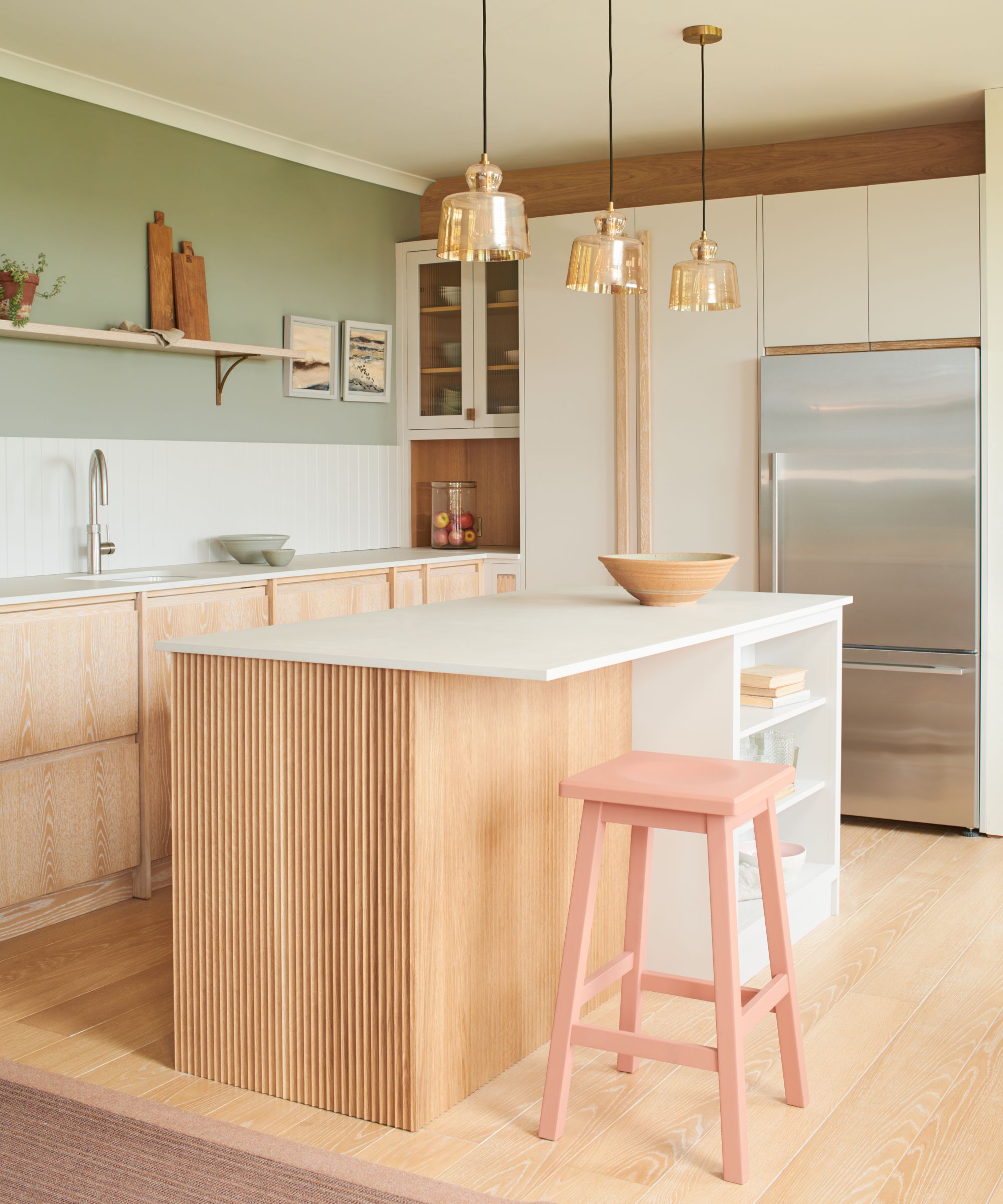These are the best paint colors to pair with wooden flooring, according to interior designers
Here's how designers choose the right paint colors when designing a scheme around wooden flooring, for a cohesive look


When deciding on a color scheme for a room, there are many things to consider, but one of the most important is how well the paint colors complement the room's flooring. If your room features wooden flooring, one of the most popular, timeless choices, you should use its hue to inform the wall colors to result in a cohesive scheme.
However, that's often easier than it sounds, and you may be wondering where to start with mastering your color choices and paint ideas. To give you some steer in the right direction, we spoke with a range of interior designers who shared their expertise on the best paint colors to pair with wooden flooring, which we explore here.
Whether your wooden flooring is light-toned or dark; warm-toned or cool, the below ideas will give you cues to ensure your room color ideas are well balanced.
The best paint colors to pair with wooden flooring

There are many aspects to consider when choosing the right paint colors to best complement wooden flooring. From how light interacts with the wood to its undertones, interior designer Erica McLain, founder of McLain by Design Interiors shares below some of the most important elements to consider:
'When choosing paint colors for rooms with wooden flooring, it’s essential to consider how the natural light interacts with the wood’s undertones throughout the day and how the room is intended to be used,' Erica begins. 'Wooden floors can range from warm honey tones to cool grays, and selecting the right paint color can either enhance or counterbalance these natural hues.'
'Beyond aesthetics, I always consider the principles of neuroaesthetics when selecting colors, as they can significantly impact how we feel in a space. The right shades have the power to elevate mood, reduce stress, and even enhance cognitive function. For instance, blues and greens tend to have a calming effect and promote focus, making them ideal for a home office or a quiet retreat. Warm, neutral tones can evoke a sense of comfort and safety, perfect for living areas where connection and relaxation are key.'
'Ultimately, the goal is to select colors that not only enhance the natural beauty of the wood but also create an environment that supports how you want to feel and function in the space. Every room has a unique story, and color is one of the most important tools we can use to tell it,' says Erica.
Design expertise in your inbox – from inspiring decorating ideas and beautiful celebrity homes to practical gardening advice and shopping round-ups.
Light neutrals for open spaces

If wooden floors run continually throughout your home and your home's layout has an 'open' feel, meaning each room isn't closed off, choosing a timeless neutral paint can often be a great way to complement the wood tones while creating a cohesive feel.
'If the house is very open, I will normally pick a lighter wall to run throughout with some variation from room to room,' says interior designer Gray Walker of Gray Walker Interiors.
While neutrals that feature strong undertones can read as too warm or too cool, balanced off-whites are a good way to go in these spaces. 'A favorite neutral that is not too gray or too cream is Benjamin Moore's Seapearl,' adds Gray. 'It is a fresh and modern white that plays well with many wood stains.'
Earth tones to complement warm wood

If your wooden flooring is a warm tone, earthy colors can be a great way to tie together the color scheme, especially if you want to lean into a cozier look.
'If the flooring has warmer, golden undertones, I often gravitate towards earthy tones like soft taupes, muted greens, or even rich terracottas,' explains Erica McLain. 'These colors ground the room while complementing the warmth of the wood, creating a cozy and harmonious environment.'
The same approach can be applied to cool-toned wood tones too, whereby cooler hues like blue or even cooler whites complement the flooring: 'On the other hand, cooler-toned wood pairs beautifully with serene blues, crisp whites, or light grays, evoking a sense of calm and sophistication,' Erica adds.
Mix and match warm and cool tones

Instead of matching warm paint colors with warm wood and cooler colors with cool-toned wood, embracing a mix-and-match approach can work just as well, creating more of an unexpected look.
'I enjoy playing with the interplay between the cool and warm tones of wood, using paint colors to create a striking contrast or harmony,' explains Orange County designer, Olga Doykhen. 'For example, a warm beige can complement rich, walnut flooring, while a soft, cool gray can enhance lighter, honey-toned flooring. This juxtaposition adds depth and character to the room.'
Use green for a calming scheme

If you're looking for a failsafe color to pair with wooden flooring and want to venture away from light neutrals like white or beige, consider decorating with green.
'Wood flooring tends to bring a lot of warmth to a space, so we love to incorporate colors with cooler tones that create a contrast to that warmth and create balance in the design,' says Miranda Cullen, principal designer and founder of Inside Stories.
'Two of our favorites are earthy greens like olive and sage,' adds Miranda. 'Green tones bring out the organic nature of wood, creating a calm and natural feel in the room. They complement both light and dark wood, blending the room’s elements harmoniously by creating that warm and cool contrast.'
There are plenty of green paints to choose from, depending on how light or dark you wish to go, but shades like Farrow & Ball's Vert De Terre are a good all-rounder.
Choose rich, warming shades with light wood

If your wooden flooring is a light tone, richer colors can be a great way to add depth to the room and ensure the color scheme doesn't feel too light and pale.
'What we pay closest attention to is the tone of the wood,' explains Diane Rath, founder and principal designer at The Rath Project. 'Lighter, blonde oaks look great with plums, reds, raspberries, and tangerine.'
'Darker warmer woods – pines, cherries, and hickory – those with deeper darker undertones, pair well with cooler colors like green and blue,' adds Diane. 'When you are unsure about what colors will complement your floors, just look back to lessons in color theory. Complementary tones are those that are across from one another in the color wheel.'
There are lots of things to consider when deciding on the best paint color to pair with wooden flooring, from the desired warmth levels to how much contrast you wish to create. Before settling on a paint color, make sure to test it first to see how the color looks at different times of the day as the natural light changes.

Emily is a freelance interior design writer based in Scotland. Prior to going freelance in the spring of 2025, Emily was Homes & Gardens’ Paint & Color Editor, covering all things color across interiors and home decor for the Homes & Gardens website. Having gained specific expertise in this area, Emily is well-versed in writing about the latest color trends and is passionate about helping homeowners understand the importance of color psychology in home design. Her own interior design style reflects the simplicity of mid-century design and she loves sourcing vintage furniture finds for her tenement flat.

